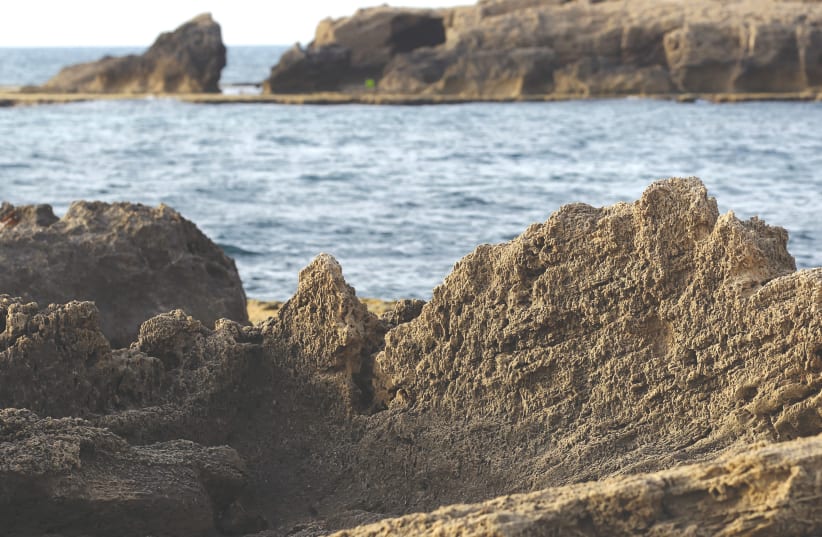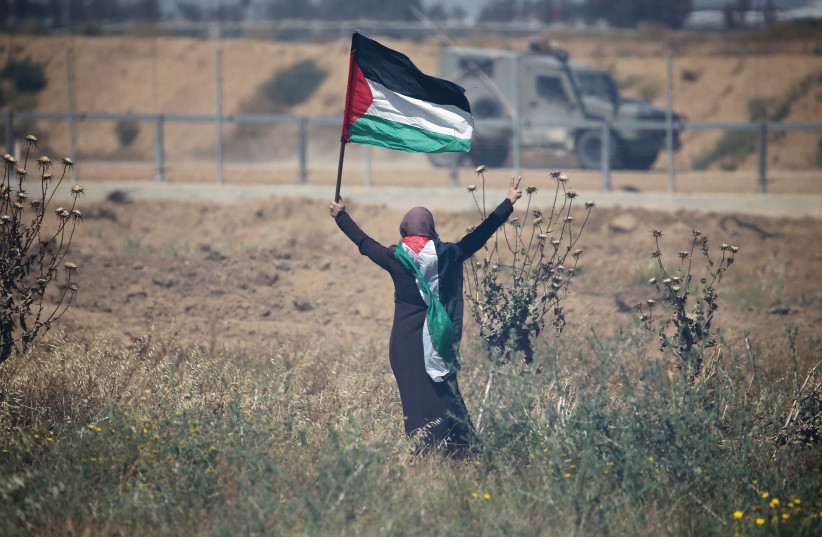Sitting on the beach at Kibbutz Nahsholim, also known as Hof Dor, I came across some graffiti probably drawn on May 15 – Nakba Day. “Tantura 1948” in Arabic was spray painted on the side of a hill near the water’s edge.
That was the name of this place before 1948 – a Palestinian village wiped off the map after a massacre was done by Jewish forces on May 23, 1948. The latest historical evidence that there was in fact a massacre was uncovered in a film shown first at the Sundance Festival in January 2022, in which several veterans who participated in the massacre told their story. About 200 Palestinians were murdered and the village was evacuated of its 2,000 residents and then bulldozed. There is one remaining building on the Dor beach from the village of Tantura.
After seeing the graffiti while sitting and reading, gazing at the blue waters of the Mediterranean on one of Israel’s most beautiful beaches, I began contemplating our reality. Whenever I travel around the country, I always try to think about the place I am visiting and its multi-layered history. With the help of the iNakba smart phone application it is also possible to see if I might be around one of the more than 400 Palestinian villages that were destroyed shortly after the state of Israel was born and succeeded in its war of Independence.
Could it all have been different?
Sunday afternoon on this peaceful, serene beach and I thought to myself: Could it all have been different? Did Jews searching for a safe haven and a homeland have to enter into an existential conflict with the indigenous Palestinians who were already living in this land? The first group of Zionist settlers in Palestine began building their new towns and employed local Palestinian Arabs to work with them. In 1913, tensions began to erupt between neighboring Arabs and Jews in a vineyard in Rehovot. A brawl provoked over the theft of a bunch of grapes turned violent, leaving one Arab farmer and one Jewish guardsman dead.
Within days, this dispute escalated into an uproar about the future of each group’s claim to the same homeland. It marked a violent turning point in the history of the Arabs and Jews in Palestine. The conflict escalated with the Second and Third Aliyot (second and third wave of Jewish immigration to Palestine) which adopted the goal of creating “the new Jew” who was connected to the land and worked the soil.
This was the beginning of the concept of “Hebrew Labor.” The idea from the Jewish side was part of the pioneering spirit of returning to the ancient homeland and transforming physical work into a virtue. It also meant not hiring local Arabs to work in these new colonies.
For the local Palestinian villagers, the land that they lived on was literally taken from under their feet, sold by absentee land owners to the new Jewish settlers who excluded them from the new economy that was developing around them. The fear of being uprooted from their homes and disenfranchised from their ability to work their land and to provide for their families grew even before the religious issue of al-Aqsa and Jerusalem erupted in 1920, at the time of the Nebi Mousa festival.
“The Arab problem can only be solved... by entering into direct contact with the population... as long as we do not initiate such a policy... a bold effort to talk directly to the Arabs, to discuss the principles of neighborly friendly relations and co-existence, to thresh out these problems directly, people to people... the Arab question will remain a dark spot in the Palestine problem and the problem will remain unsolved.”
Nahum Goldmann
In 1937, the Zionist leader Nahum Goldmann noted, “The Arab problem can only be solved... by entering into direct contact with the population... as long as we do not initiate such a policy... a bold effort to talk directly to the Arabs, to discuss the principles of neighborly friendly relations and co-existence, to thresh out these problems directly, people to people... the Arab question will remain a dark spot in the Palestine problem and the problem will remain unsolved.” From Goldmann’s own direct contacts with Palestinian Arabs, he foresaw the grave errors that were being made by the Zionist movement and he warned about the consequences.
“One of the great oversights in the history of Zionism is that when the Jewish homeland in Palestine was founded, sufficient attention was not paid to relations with the Arabs. Of course, there were always a few Zionist speakers and thinkers who stressed them... And the ideological and political leaders of the Zionist movement always sincerely and earnestly emphasized the Jewish national home must be established in peace and harmony with the Arabs. Unfortunately, these convictions remained in the realm of theory and were not carried over, to any great extent, into actual Zionist practice.
Even Theodor Herzl’s brilliant simple formulation of the Jewish question as basically a transportation problem of “moving people without a home into a land with a people” is tinged with disquieting blindness to the Arab claim to Palestine. Palestine was not a land without people even in Herzl’s time; it was inhabited by hundreds of thousands of Arabs who, in the course of events, would sooner or later have achieved independent statehood, either alone or as a unit with a larger Arab context.”
Many of the Zionist movement’s leaders were convinced that the Zionist movement would bring modernity, economic development and jobs, which would be appreciated by the local Arab population. Even with what may have been some good intentions, they created class disparities and fostered a classic colonialist economic situation on the ground.
The economic growth in Palestine during the early years was mainly the result of the impact of massive economic development and infrastructure construction of the British Mandate. The British divided and ruled, but there were also many Jews and Arabs during the Mandate period who worked together and sought to live together in peace.
The rejection of UN Resolution 181 on partition by the Arabs and the subsequent war of 1948 changed all that. The decisions of the first Israeli government not to allow any return of Palestinians to their homes after the war, even those who were willing to live in peace with their neighbors as UN resolution 194 stated, are the foundations of the reality in which we live today. Israel quickly demolished more than 400 Palestinian villages, such as Tantura, and turned over properties and a lot of Palestinian owned land to Jews.
The UN Special Committee on Palestine sought to provide for the self determination of both the Jews and the Palestinians within the borders between the river and the sea. The Jews achieved that and the Palestinians did not.
With the demise of a two state solution and moving towards either a one-state reality, or some form of federation or confederation, we need to think very seriously about how we come to terms with the conflict divide. There is no possible solution to the conflict without also coming to terms with our past mistakes (on both sides), and beginning to understand how we can transform ourselves to be able to accept and recognize each other’s collective and individual rights.
There is no solution which will be based on total separation or ethnic cleansing. No walls or fences will hide the problem and the conflict. It is only through developing genuine cooperation and partnership across the divide that we can even begin to think together on how we can share the land, express our unique identities and live together in peace.
The writer, a political and social entrepreneur, has dedicated his life to Israel, and to peace between Israel and her neighbors. He is now directing The Holy Land Bond.

